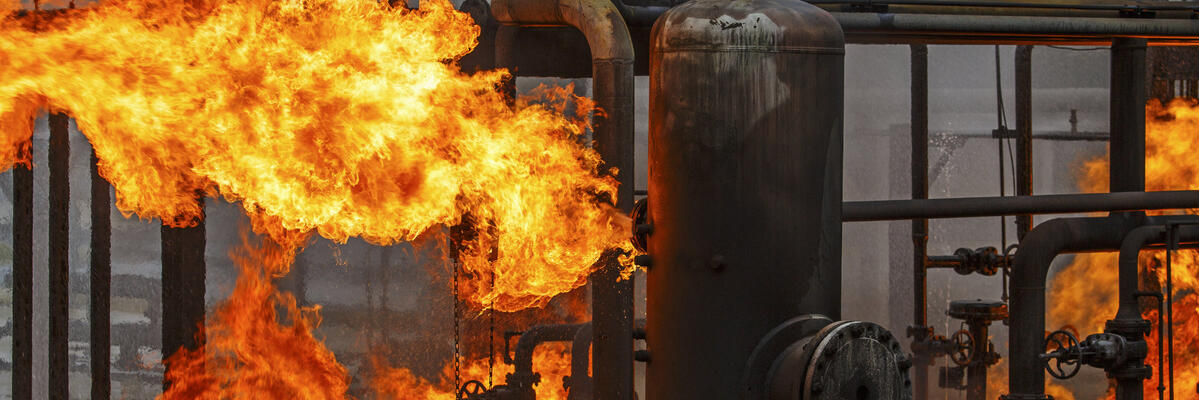In response to the Environmental Protection Agency (EPA) and Occupational Safety and Health Administration’s (OSHA) new chemical facility alert, the Coalition to Prevent Chemical Disasters issued the following statement:
Yesterday’s alert from the EPA & OSHA will not protect workers or communities from chemical disasters. Two years after the fatal West, TX fertilizer explosion, we need more than voluntary measures and recommendations. Allowing the chemical industry to police itself has proven woefully ineffective in the past. For example, an EPA alert on chemical facility safety issued in February 2000 did little more than remind companies of their legal obligation to prevent catastrophic releases. And just since the West, TX tragedy in 2013, there have been over 350 chemical accidents resulting in 79 deaths and 1,500 hospitalizations. Our Coalition, which is composed of over 100 environmental justice, labor, public health, national security, and environmental organizations has called on President Obama since June 2011 to honor his 2008 pledge to issue enforceable regulations to prevent tragedies like the disaster in West that killed 15 people and injured over 200. President Obama has a historic opportunity to protect the more than 100 million Americans (including one in three schoolchildren) at risk of a chemical disaster and fulfill his oath of office. President Obama issued an executive order (13650) on Aug. 1, 2013 directing agencies to modernize their regulations in the wake of the West tragedy, but they have not issued any new requirements to prevent chemical disasters. EPA is the federal agency with the greatest authority to issue new chemical facility safety rules, yet the agency has delayed proposing new regulations until September 2015. Typically, an EPA rule can take 12-15 months to finalize. In a March 19 letter to President Obama, the Coalition warned that waiting until September “will jeopardize finalizing a rule before you leave office…. To ensure that new rules do take effect, they must be finalized well in advance of the end of your administration’s term in office.” Following a May 2, 2014 meeting with the EPA, OSHA, and the Department of Homeland Security (DHS), the Coalition sent the agencies a letter urging them to implement new, prevention-based regulations within 18 months, including: Implement primary prevention policies that require chemical facility owners and operators to use safer chemicals or processes wherever feasible to prevent disasters Prioritize protection of the most vulnerable populations, including workers, fenceline communities, and first responders OSHA should modernize its Process Safety Management (PSM) standard, including continual safety improvements, the use of inherently safer technologies, and it should ensure that its PSM facilities are also included in the EPA’s Risk Management Program Enhance funding for emergency response, emergency planning, evacuation, and possible relocation of impacted communities when safer chemicals and processes are not available Ensure regular inspections of facilities, whistleblower protections for workers, and personnel surety provisions that protect workers’ rights while avoiding duplicative mandates. Contact: Brian Gumm, Center for Effective Government (202) 683-4812 bgumm@foreffectivegov.org Rick Hind, Greenpeace (202) 413-8513 rhind@greenpeace.org Carli Jensen, U.S. Public Interest Research Group (206) 766-0510 cjensen@pirg.org Eric N. Whalen, Coming Clean (971) 998-8786 ericwhalen@comingcleaninc.org Coalition to Prevent Chemical Disasters: http://preventchemicaldisasters.org Further Resources Chronology of the EPA “Considering” Chemical Disaster Prevention: 1995 “EPA does not favor inclusion of a specific requirement in the initial program for an analysis of the inherent safety of processes…EPA is considering further study of this issue with all stakeholders and requests comment on this issue.” 2002 Following the 9/11 attacks, EPA Administrator Christine Todd Whitman proposed regulations in 2002 following the 9/11 attacks but they were scuttled by the Bush White House. She has since urged Obama to issue new safety rules. 2009 Peter S. Silva, EPA Assistant Administrator for Water, testified in favor of requirements to use inherently safer technologies(IST) also known as safer chemical processes. 2010 Cynthia Dougherty, EPA’s Director of the Office of Ground Water and Drinking Water of the Office of Water testified in favor of requirements to use inherently safer technologies (IST) also known as safer chemical processes. 2011 Rand Beers, Department of Homeland Security Undersecretary testified in favor of requirements to use safer technologies (IST) also known as safer chemical processes. 2012 EPA’s National Environmental Justice Advisory Council recommended that the “EPA use its authority under the 1990 Clean Air Act section 112 (r) to reduce or eliminate these catastrophic risks, where feasible, by issuing new rules and guidance…” 2012 EPA says they will address a petition from 54 organizations urging that they use their Clean Air Act authority to require inherently safer technologies (IST). 2013 President Obama issued Executive Order 13650 giving federal agencies such as the EPA, DHS and OSHA nine months to propose ways to modernize their chemical facility safety and security policies. 2014 In a multi-agency report to the President the EPA pledged to complete new regulations by 2016 including possible requirements for inherently safer technologies (IST) 2015 EPA plans to issue “proposed” regulations in September 2015 with the expectation of completing them in 2016.
http://www2.epa.gov/sites/production/files/2013-11/documents/secale.pdf
https://www.documentcloud.org/documents/332037-blue-green-coalition-letter-to-obama-june-21-2011.html
https://www.documentcloud.org/documents/1380842-epw-12-11-14chemical-accidents-charts-v5.html
http://www.reginfo.gov/public/do/eAgendaViewRule?pubId=201410&RIN=2050-AG82
/wp-content/uploads/2015/03/coalition-ltr-to-pres-obama-final-march-2015.pdf
###

